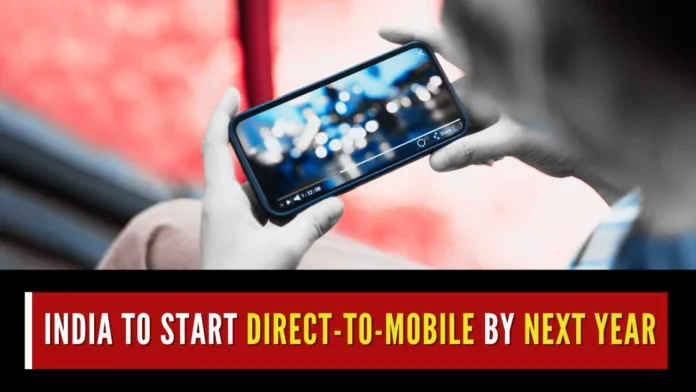
Centre bats for Direct-to-Mobile technology, pilots in 19 cities soon
Top government officials on Tuesday said mobile users may soon be able to stream videos without a SIM card or an internet connection as Direct-to-Mobile broadcasting could become a reality soon. Addressing a Broadcasting Summit, Information and Broadcasting Secretary Apurva Chandra said trials of the home-grown Direct-to-Mobile (D2M) technology would soon be held in 19 cities and made a strong pitch for reserving the 470-582 MHz spectrum for this emerging technology.
I&B Secretary said a 25-30 percent shift of video traffic to D2M would unclog the 5G networks, accelerating the nation’s digital evolution and democratizing content delivery. Last year, pilot projects to test the D2M technology were carried out in Bengaluru, Kartavya Path, and Noida. He said the D2M technology would help reach nearly 8-9 crore “TV Dark” homes across the country. Of the 280 million households in the country, only 190 million have television sets. He said there were 80 crore smartphones in the country and 69 percent of content accessed by users was in the video format.
Chandra said heavy use of video led to the clogging of mobile networks, which resulted in the buffering of content. Developed by Saankhya Labs and IIT Kanpur, the D2M broadcasting technology leverages terrestrial telecommunications infrastructure and public broadcaster-assigned spectrum to transmit video, audio, and data signals directly to compatible mobile and smart devices.
With the potential to reach over a billion mobile devices, the adoption of D2M technology promises transformative benefits, including cost reductions in data transmission and access, improvements in network efficiency and resilience, and potentially leading to the establishment of a nationwide emergency alert system.
On ‘Direct-to-Mobile’ (D2M) broadcasting technology, Dr. Abhay Karandikar, Secretary, the Department of Science of Technology (DST) says, “It will be disruptive because the D2M has the potential to really revolutionize the broadcast industry. It will not be a competition to the Internet. In fact, it will help the Internet in the sense that currently, today, the broadcast TV you consume on mobile only through OTT applications. And with broadcast TV, it will be possible to free up that spectrum so that the Internet bandwidth actually becomes available for more only Internet-type applications…The technology is already mature, and available. Some lab trials and field trials have been done. Now you have to do a citywide pilot trial so that its potential can be demonstrated. And then of course, the government as a regulator has to enable the rollout and deployment of this technology commercially. So I’m hoping that in the next year or so, we can launch this technology with an indigenously developed system…”
#WATCH | On ‘direct-to-mobile’ (D2M) broadcasting technology, Dr Abhay Karandikar, Secretary, Department of Science of Technology (DST) says, “It will be disruptive because the D2M has the potential to really revolutionize the broadcast industry. It will not be a competition to… pic.twitter.com/11ms7CEzgH
— ANI (@ANI) January 16, 2024
For all the latest updates, download PGurus App.
- Supreme Court rejects plea to tally all VVPAT slips with EVM votes; says ‘no going back to paper ballot’ - April 26, 2024
- US report citing human rights violations is deeply biased: India - April 25, 2024
- Kotak Mahindra Bank shares tank 13%. Market Cap erodes by Rs.37,721 cr post-RBI action - April 25, 2024










